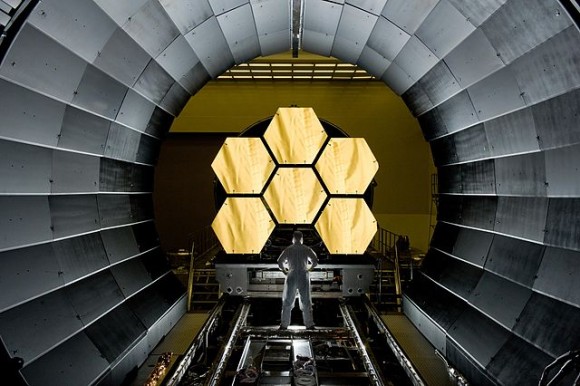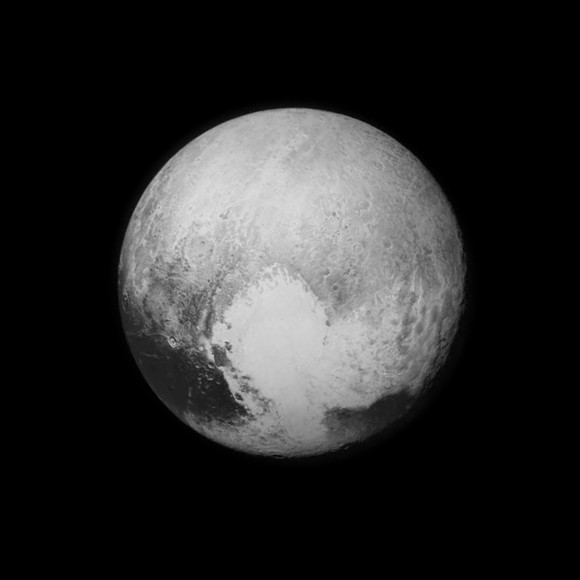aNewDomain — I recently had the honor and pleasure of interviewing science fiction author and futurist Scott “S.H.” Jucha on the eve of the rare “super blood moon eclipse” that occurred between September 27 and 28, 2015. This particular lunar cycle was hailed by many religious fanatics and religious researchers as an ushering in of the Apocalypse — what else is new? — but Jucha wanted to speak about more rational science and technological matters.
 S.H. Jucha worked as a senior manager in the technical education and software development industries and holds degrees in biology and broadcast communications. He is the author of the science fiction series “The Silver Ships.”
S.H. Jucha worked as a senior manager in the technical education and software development industries and holds degrees in biology and broadcast communications. He is the author of the science fiction series “The Silver Ships.”
I interviewed Jucha via email. What follows is a transcription of my formulated questions and his detailed, fascinating answers.
Interview with S.H. Jucha of “The Silver Ships”
Brant David: Many believe that space exploration may be humanity’s only hope for survival. It sounds like if we don’t sooner or later leave this planet, we human beings are doomed to extinction. Is this merely because of the ultimate limits of sustainability (which I, personally, believe we’re still a long way away from bumping up against assuming continued technological development), or is there a psychic or spiritual element to this necessity to go into outer space, too? Do we have an innate drive to finally leave the confines of Mother Earth which also has a “self-destruct” element embedded in itself should we fail to do this?
S.H. Jucha: Earth’s environment is in a slow decline that will be punctuated by ups and down. I see more and more evidence of individuals, small groups and organizations fighting to reverse the effects of pollution and global climate change, but the negative effects of large corporations and governments are difficult to counteract.
Our adventure into space is more about fulfilling the human psyche’s need for the challenges of a new frontier than they are about a desire to leave the confines of the Earth. Reality, for the majority of the global population, is that they will live and die on Earth, but they may live vicariously through the experiences of our space explorers.
Brant David: It has been said that life on Mars and beyond planet Earth may be closer than ever before. What does this mean, and why do you think this could be true?
 S.H. Jucha: Space exploration has the potential to be a global economic shot in the arm and a well-spring of future new research. However, let me share my definition of the term “space exploration.” It isn’t a future consisting wholly of probes launched to investigate asteroids and distant bodies, which I applaud, but more importantly, the creation of long-term habitats, government and commercial, which Dr. Buzz Aldrin terms as “permanence.” The ex-astronaut and MIT post-doctoral graduate has outlined an ambitious and practical plan to colonize Mars. Dr. Aldrin dismisses the “tourist approach” to space exploration, defined as visiting a planetary body and returning, much as the Apollo Missions did with the Moon.
S.H. Jucha: Space exploration has the potential to be a global economic shot in the arm and a well-spring of future new research. However, let me share my definition of the term “space exploration.” It isn’t a future consisting wholly of probes launched to investigate asteroids and distant bodies, which I applaud, but more importantly, the creation of long-term habitats, government and commercial, which Dr. Buzz Aldrin terms as “permanence.” The ex-astronaut and MIT post-doctoral graduate has outlined an ambitious and practical plan to colonize Mars. Dr. Aldrin dismisses the “tourist approach” to space exploration, defined as visiting a planetary body and returning, much as the Apollo Missions did with the Moon.
The habitats may start with government-funded programs focused on research, but there is tremendous opportunity for commercial ventures to eventually add their own programs. SpaceX and tourism represent one end of the commercial spectrum, and mining may represent the other. In this latter category, the Red Planet’s ice caps present an opportunity for a mining concern to setup operations to breakdown ice water into hydrogen for fuel and oxygen for the planet’s habitats.
In addition, we know our moon and most likely other moons and planets are composed of a host of useful minerals, containing a variety of elements. Moon rock analysis has identified quantities of pyroxene, feldspar, olivine and ilmenite. These minerals are found in various forms: pyroxene – XY(Si,Al)2O6 (X represents calcium, sodium, iron+2, magnesium and occasionally zinc, manganese and lithium, and Y represents chromium, aluminum, iron+3, magnesium, manganese, scandium, titanium, vanadium and even iron+2); olivine – (Mg+2, Fe+2)2SiO4; feldspar – (KAlSi3O8, NaAlSi3O8, and CaAl2Si2O8); and ilmenite – FeTiO3. Note this last formula contains titanium, a critical metal in manufacturing.
Video: Shoot For The Moon – a short film about space exploration
Brant David: You’ve said that technology can be a double-edged sword, something that can save Earth while destroying it at the same time. Are you referring to mankind’s capacity to weaponize technology, or is there something more here, such as unintended consequences? For instance, our Net-connected devices, our televisions, our microwave ovens, many of our medical devices, and so forth are giving off minute radiation fields. Are we unintentionally causing health and environmental problems with these miraculous technological tools? And if we are, what do you think we could do about it?
S.H. Jucha: Technology has the dual nature of science and application. In my book, science is relatively neutral, providing its investigation does not involve harming living organisms. It’s the application of science that requires forethought and wisdom with consideration, first and foremost, placed on the health and well-being of humans, animals and the environment.
Unfortunately, too many companies chase profits without regard to the concept of good corporate citizenship, and unfettered capitalism tends to place any and all products within reach of the public without regard to long-term consequences. We use extraordinary amounts of pesticides to increase crop production today and poison our waters for decades to come. We create personal tech such as smartphones, tablets and the like, which could be very useful tools if used intelligently, but are often put to mindless use playing games and watching inane videos.
If our care for one another and this Earth are not emphasized to children by parents and teachers, the long-term consequences of those young, once reaching adulthood, is an erosion of what gives humans the opportunity to succeed as a species … our togetherness.
Brant David: I know that you’re right when you assert that early space exploration has made invaluable contributions to today’s technologies, helping to take on problems we have faced planetside. But have you got any technologies specifically in mind, and are there space-exploration programs we used to be engaged in which we have foolishly abandoned? Would you say that the years of the 1970s and 1980s were the golden age of space exploration — and, if they were, why did we steer away from it?
S.H. Jucha: Despite the belief of some that venturing into space is a waste of money, space exploration has created innovations that have given rise to new industries, providing employment and generating revenue. NASA’s website states:
The areas in which NASA-developed technologies benefit society can broadly be defined as: health and medicine, transportation, public safety, consumer goods, environmental and agricultural resources, computer technology and industrial productivity.”
Two prime examples listed are: Dr. Michael DeBakey of Baylor College of Medicine and engineer David Saucier of the Johnson Space Center developed an artificial heart pump based on the design of NASA’s space shuttle main engine fuel pumps, and two NASA Kennedy Space Center scientists and three faculty members from the University of Central Florida developed EZVI Technology, a cost-effective and efficient cleanup solution to underground pollution that poses a contamination threat to fresh water sources in the area.
In the future, something as elementary as NASA’s drones, which are destined for Mars in 2020 to scout terrain for a rover, have potent potential for us on Earth. These small helicopter scouts will operate in the Martian atmosphere, which is only one percent of the density of Earth’s atmosphere at sea level. To accomplish this feat, NASA will have to employ ultra-efficient means of lift, such as enlarging the blades, spinning them faster, or employing counter-rotating propellers. Whatever their innovative design, if their scout’s propellers efficiently provide lift in such a rarified atmosphere as that of Mars, might they not have application for our wind turbines, generating electricity at lower wind speeds and allowing their placement in many more locations?
 Another significant scientific endeavor set to unfold in the near future is the James Webb Space Telescope, scheduled to launch in 2018 into an orbit around the sun. It will be able to view events 200 to 300 million years after the Big Bang. Over the remainder of this decade and the next, our Mercury, Gemini, and Apollo missions highlighted the race into space, a race we sought to win on many fronts during the Cold War. We wished to prove we could accomplish the tasks and win the race. Alternately, Dr. Aldrin’s Mars Mission is scheduled to establish a human settlement on Mars, which has a much greater potential of helping humans venture permanently into space. This does require NASA’s budget be significantly increased, which has shrunk considerably since the days of the Apollo Missions.
Another significant scientific endeavor set to unfold in the near future is the James Webb Space Telescope, scheduled to launch in 2018 into an orbit around the sun. It will be able to view events 200 to 300 million years after the Big Bang. Over the remainder of this decade and the next, our Mercury, Gemini, and Apollo missions highlighted the race into space, a race we sought to win on many fronts during the Cold War. We wished to prove we could accomplish the tasks and win the race. Alternately, Dr. Aldrin’s Mars Mission is scheduled to establish a human settlement on Mars, which has a much greater potential of helping humans venture permanently into space. This does require NASA’s budget be significantly increased, which has shrunk considerably since the days of the Apollo Missions.
Brant David: How can science fiction literature inspire future opportunities in space and on future human-inhabited worlds? Should authority figures who have power over our possible space exploration take sci-fi writers seriously? The late, great Ray Bradbury once quipped in the 1990s that sci-fi is the most important literature in the world now and will be so for the next 10,000 years. Do you think he was right?
S.H. Jucha: Historically, fiction writers have been the harbingers of our future science. You need look no further than the incomparable Isaac Asimov, a master of hard science fiction, who detailed robotics, artificial intelligence and space exploration more than sixty years ago. Robert A. Heinlein anticipated the cell phone in his book, “Space Cadet,” thirty-five years before the technology was invented by Motorola, and Arthur C. Clarke, often called the “Prophet of the Space Age,” proposed a satellite communication system in 1945.
 However, in the 21st century, science has been stealing the headlines away from science fiction. New Horizons sent us images of Pluto and its moons — Charon, Nix, Hydra, Styx and Kerberos. Philae landed on a comet, and NASA’s Kepler spacecraft has identified another near-Earth planet in the habitable zone of a sun-like star.
However, in the 21st century, science has been stealing the headlines away from science fiction. New Horizons sent us images of Pluto and its moons — Charon, Nix, Hydra, Styx and Kerberos. Philae landed on a comet, and NASA’s Kepler spacecraft has identified another near-Earth planet in the habitable zone of a sun-like star.
In addition to hard science prognostications, fiction writers have long envisioned mankind’s future encounters with aliens and have portrayed sentient life in a myriad of ways from war-faring empires to symbionts, who ride a human’s brain, to artificial intelligences, which have left their creators behind. Recently, science has been catching up with fiction writers on the subject of life in outer space.
Investigations of carbon-rich meteorites have found evidence of life apart from that of Earth. Amino acids, which are the essential building blocks of life, have been discovered on meteorites. Most telling is that the amino acids were created in both low-level and high-level temperatures.
If you follow the numbers — billions of galaxies and up to 300 billion stars per galaxy — astronomers estimate that there are about 70 billion trillion stars. In our short investigative period, we’ve already discovered 4,696 exoplanets, creating an enormous potential for life. Maybe the science fiction writers have been right about the possibilities of aliens.
Brant David: What do you think of the Star Wars movies and offshoot novels as cultural and spiritual commentary?
S.H. Jucha: The first Star Wars movie represented a huge jump in the quality of movie CGI. That it did so while presenting the subjects of space, aliens and mysticism did much to fire the public’s imagination on these subjects.
Brant David: Have you any thoughts on so-called “Ancient Astronaut” theories?
S.H. Jucha: I would not care to voice an opinion on such an emotionally-charged argument as the Ancient Astronaut theories. In no particular order, I consider myself a humanist, an environmentalist, a futurist and a practical person. These lead me to be concerned with the well-being of people and the environment … now and in the future … and we need to be helping ourselves and caring for our environment if we wish to succeed as a species.
You can order Jucha’s books in the Silver Ships series from Amazon.
(Disclaimer: Based on his own many years of research and thought, Brant David emphatically disagrees with Mr. Jucha’s views on “unfettered capitalism” and alleged man-made climate change. Mr. Jucha’s takes on these matters are faithfully recorded above, but should not be taken as being endorsed by Brant David.)
For aNewDomain, I’m Brant David.
Images in order: “The Silver Ships” courtesy S.H. Jucha; Blood Moon via Wikimedia Commons; Buzz Aldrin via Wikimedia Commons; James Webb Primary Mirror via Wikimedia Commons; Pluto New Horizons courtesy NASA.












